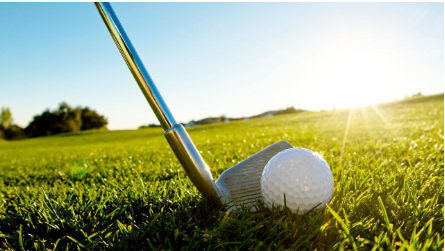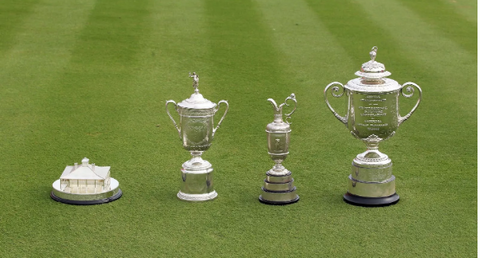Golf is a club-and-ball sport in which players try to use as few strokes as possible to hit balls into a sequence of holes on a course. Whoever holes their ball in the fewest number of attempts wins. Although it is difficult to pinpoint the game's origins, recent research points to early versions of golf being played in Scotland before moving on to the Netherlands.
Scots invented the modern game of golf in the fifteenth century. At the Old Course in St. Andrews, the 18-hole format was developed in 1764. The game gained international recognition after emerging from a fairly obscure past, particularly in the 20th century.

There is no denying that golf's emergence as an organised sport was uniquely British, and the country also gave the world its first truly outstanding golfers. A collection of professionals who created golf balls, crafted and repaired clubs, laid out and maintained courses, and provided lessons evolved as the early golf associations, or clubs, were established in Scotland and then England.
A golf course has 9 or 18 holes, each with a teeing ground, often known as a "tee box," from where play begins at each hole. To make the course more challenging or, in the case of a green, to facilitate putting, the grass's heights vary. Many holes are constructed with a direct line of sight from the teeing area to the green, although some may veer to the left or the right, commonly referred to as a “dogleg". A "double dogleg" is a hole that occasionally has a double bend in its path.
Golf Equipment
Golf balls: A regulation ball must have a minimum diameter of 1.68 inches and a maximum weight of 1.62 ounces. There is no maximum speed limit for the ball in British play, but in American competition it cannot exceed 250 feet per second when measured under specific guidelines on equipment cared for by the USGA.
Golf clubs: A typical good player's set often includes three or four wood clubs and nine or ten irons (no more than 14 clubs may be carried during a round). A set of clubs never contains duplicates. There are variations in the weight, size, and shape of the head, the lie, the length and suppleness of the shaft. Each club is identified both, by name and by number.
The R&A and the USGA are the organisations that develop golf rules. By exchanging opinions on interpretations and amendment suggestions, they try to keep the rules uniform.

Scoring Formats
- Stroke Play: In stroke play, the score is calculated by adding together all the strokes used.
- Match Play: In match play, the score is calculated by adding up all of the holes that were "won" and deducting all of the holes that were "lost".
- Stableford: According to the Stableford scoring system, a golfer earns points based on how many strokes they use relative to par on each hole. A bogey earns you one point, a par earns you two, a birdie earns you three, and an eagle earns you four. The player with the highest score wins the round or competition after adding the points earned for each hole to create the overall score.
- Par & Bogey: Each competitor in a par and bogey competition plays a match against the course. The player "wins" if they score a birdie or better on each hole, "loses" if they score a bogie or worse, and "ties" by scoring par. Each hole is played against par or bogey (in the classic sense). The winner is the player with the best win-loss ratio.
In addition to playing golf as an individual, it also gives you the opportunity to play in a pair or team format.
Play Formats
- Foursome or alternate shots, is a pairs format. Players in each pair alternate playing strokes until the hole is finished with only one ball in play for each pair. Match play or stroke play are both options for foursomes.
- Four-ball is a pair-based format that is also referred to as better-ball and occasionally best-ball. The greater of the two scores on each hole constitutes the pair's score, with each player using their own ball. Match play or stroke play are two ways to play four-ball.
- Best ball: Each team member plays their own ball as usual during best ball, but the team's score on each hole is determined by the lowest or best score among all of the players on the team.
- Scramble: In a scramble, each team member tees off on a different hole, and the players vote on the best shot. The process is continued until the hole is complete with each player hitting their second shot within a club-length of where the best ball has come to rest.
- Patsome: With holes being played in a rotation of four-ball, greensomes, and foursomes forms, patsome is played in pairs.
Golf Tours and Championships
The British Amateur Championship and the United States Amateur Championship are the most prestigious competitions for amateur golfers.
The four coveted Grand Slam competitions for professionals include:

In addition, the Players Championship has rapidly grown in recognition and renown, to the point where it has acquired the unofficial moniker of a "fifth major."
Both the amateur-focused Walker Cup and the professional-focused Ryder Cup are significant team golf competitions that have paired American and European golfers against one another.
In the 1920s and 1930s, a number of professional matches for women were held. The first serious attempts to establish a professional golf organisation for women didn't start until the 1940s. The Women's Professional Golf Association (WPGA), was established in 1944. However, later on the female golfers of that era got together and founded the Ladies Professional Golf Association (LPGA) in August 1950.
Although women's golf has advanced significantly since the 1950s, female golfers continue to battle for the same chances as male golfers. In the USGA, there is still a sizable pay gap. The USGA has a long history of giving men's U.S. Open champions greater prize money than U.S. Women's Open winners.



















